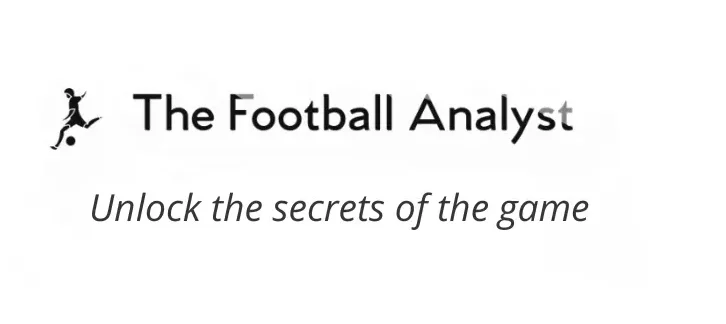Juventus seem to have been reborn after a constant rollercoaster under Thiago Motta’s command. With the arrival of Igor Tudor, the club breathes fresh air again, both tactically and mentally.
The failed “Motta Plan”
Thiago Motta arrived in Turin with new challenges in mind for the upcoming season after a historic campaign with Bologna, leading them to the
Champions League for the first time in 60 years, with impressive tactical football in Serie A.
Juventus trusted him, which is why many of the signings he requested were made for significant sums to build a top-tier squad: Koopmeiners, Douglas Luiz, Khéphren Thuram, etc. Expectations in Turin were certainly high with these new additions.
However, the reality hit hard after 42 games. Under Motta, Juventus were eliminated from competitions like the Champions League (in the qualifying round for the last 16 against PSV Eindhoven), Coppa Italia (quarterfinals against Empoli), and Supercoppa Italiana (semifinals against Milan). On top of that, the team sat fifth in Serie A with thirteen draws and three losses (two consecutive, against Atalanta and Fiorentina), achieving just a 45% win rate (the lowest in years among Juventus managers).
The restructuring with Igor Tudor
When everything seemed to fall apart, Juventus confirmed the departure of Thiago Motta and the hiring of Igor Tudor as interim coach until the end of the season. With the Croatian at the helm, the Bianconeri aimed to recover from the team’s poor tactical and mental form.
The well-known coach signed as a free agent after a brief stint at Lazio, which lasted only three months. Igor is no stranger to Juventus, having defended its colors both as a player and as an assistant coach, making him a safe bet for the club.
However, the 7 out of 9 points earned in his early days as a coach in Turin have brought a ray of hope to the Bianconeri, restoring a meticulous footballing philosophy and delivering important results in his debut. Let’s look at how Igor Tudor’s team is performing tactically:
Organized build-up with Locatelli as the system’s base
Tudor’s team, when structured, shows a 2-3-2 shape, with Locatelli (a midfielder) acting as a center-back. This improves the team’s ball circulation, as the Italian displays unmatched composure and passing ability compared to his teammates.
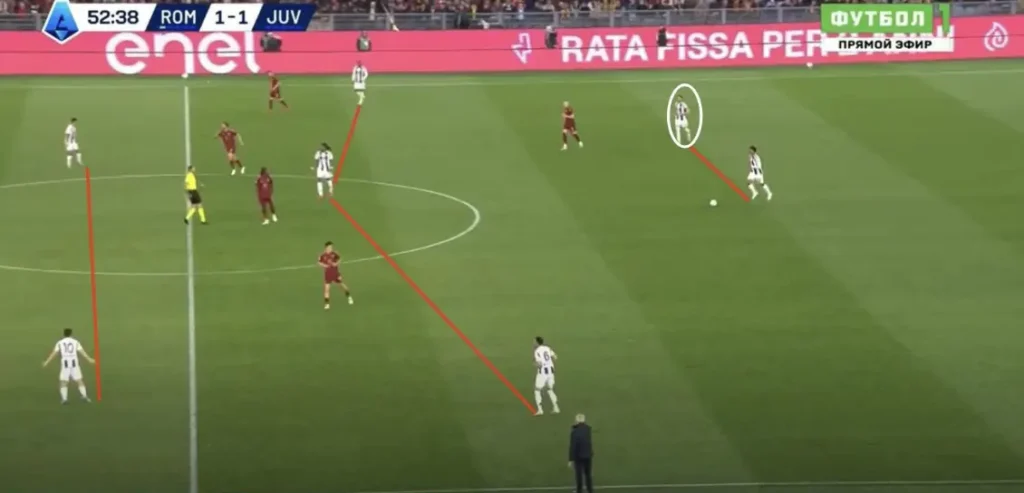
The Bianconeri captain’s role is to lead from the back and look for the best passing lanes to score in the safest way possible. He partners with Renato Veiga and orchestrates play, relying on the support of Koopmeiners, Yildiz, Nico, and others (who drop deeper to occupy central zones and help in the build-up), with Thuram being key for breaking lines with his stride.
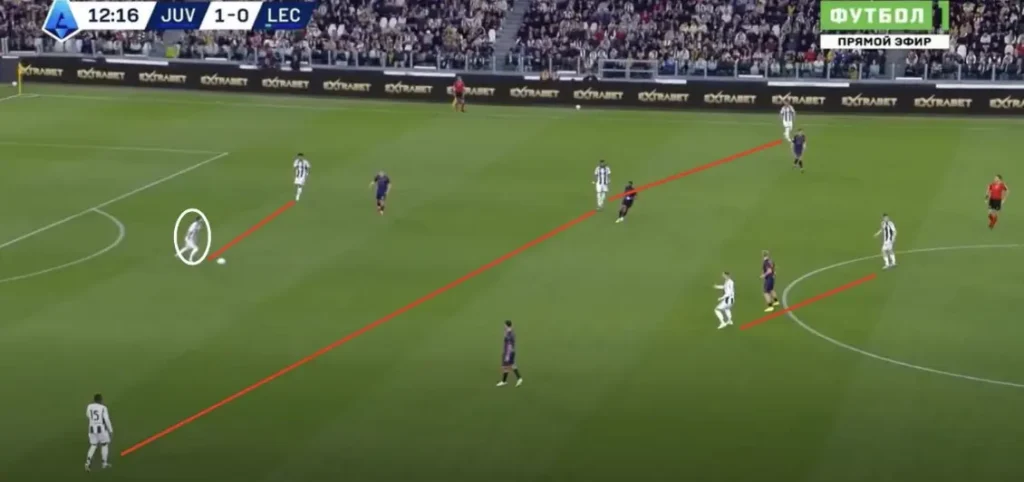
Vlahovic as the offensive anchor
When the team’s fluidity is hindered by good pressure or poor play, Dusan Vlahovic drops deeper to pull defenders out of position and open up spaces, receiving the ball with his back to goal and turning to find areas where his teammates have more freedom.
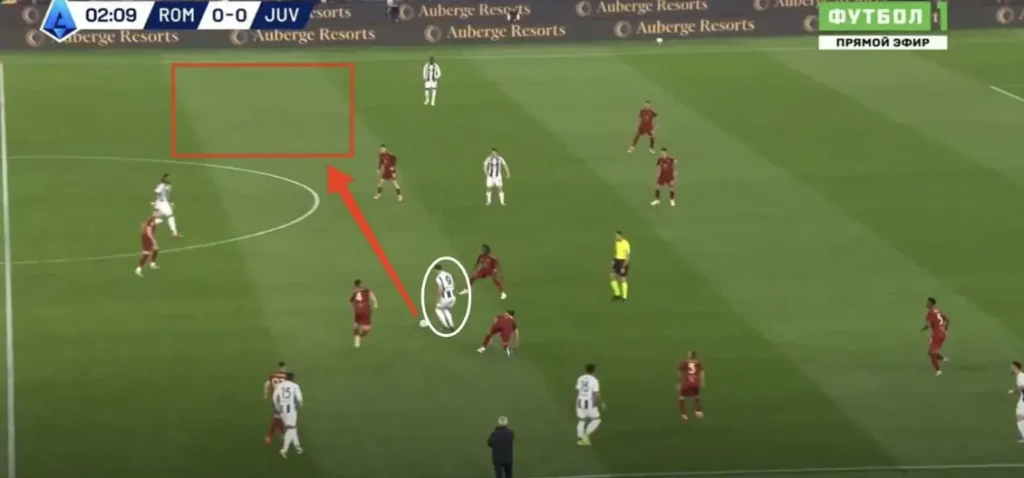
Another key role for the Serbian striker is when Di Gregorio sends long balls from the goal. Vlahovic receives with his back to goal, wins duels, and helps avoid breakdowns in the build-up caused by the opponent’s high press. He fights, moves, and improves ball circulation with seemingly simple touches that are crucial for retaining possession.
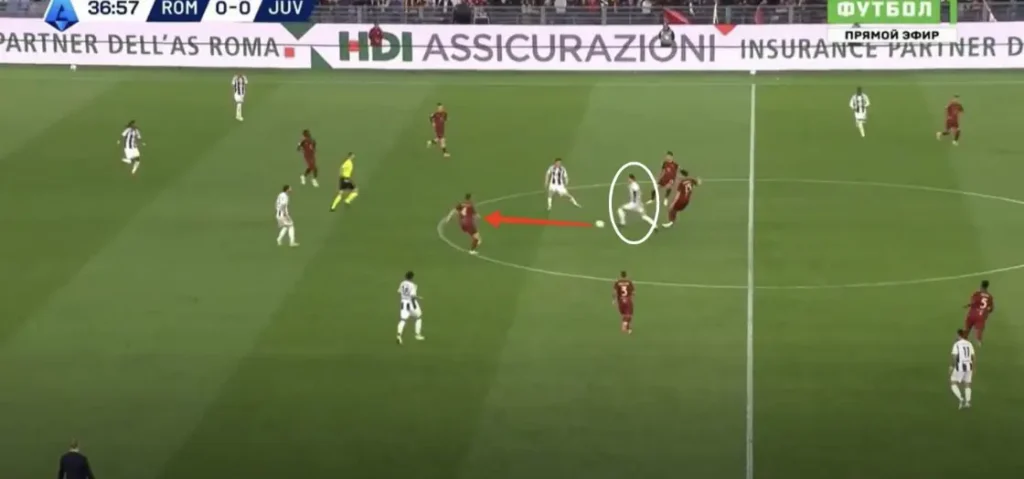
Quick and daring combinations in the final third
One key feature of this Juventus side is the fluid play in the final third. Players engage in one-twos, quick triangulations, and fast passes to break defensive lines and create space for the striker to gain possession.
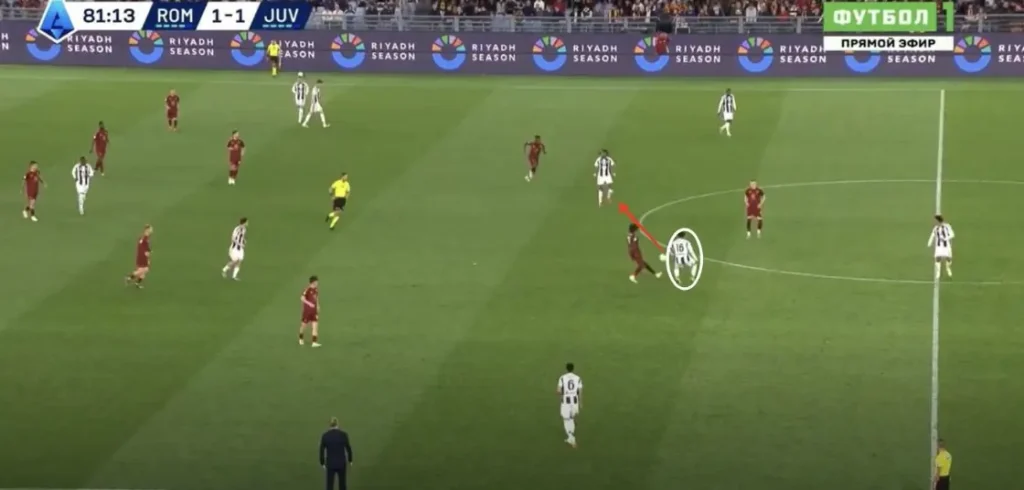
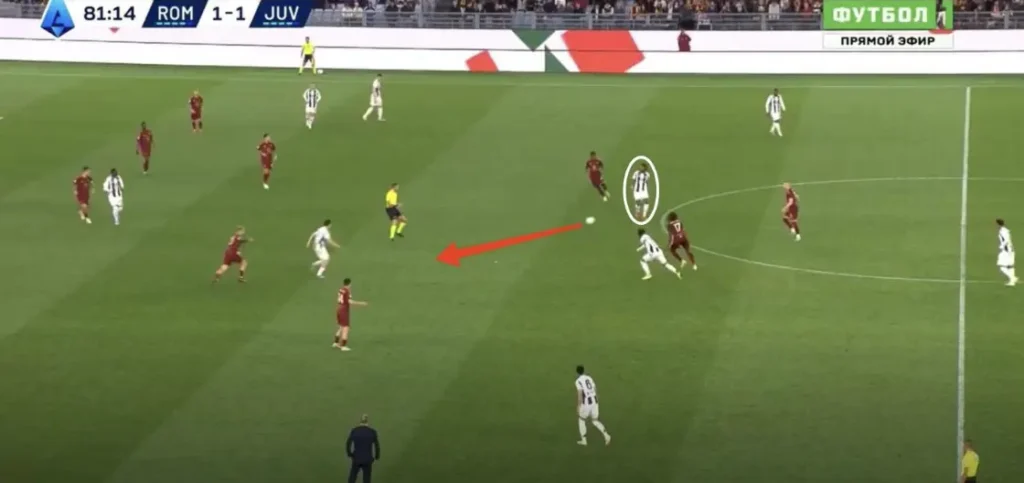
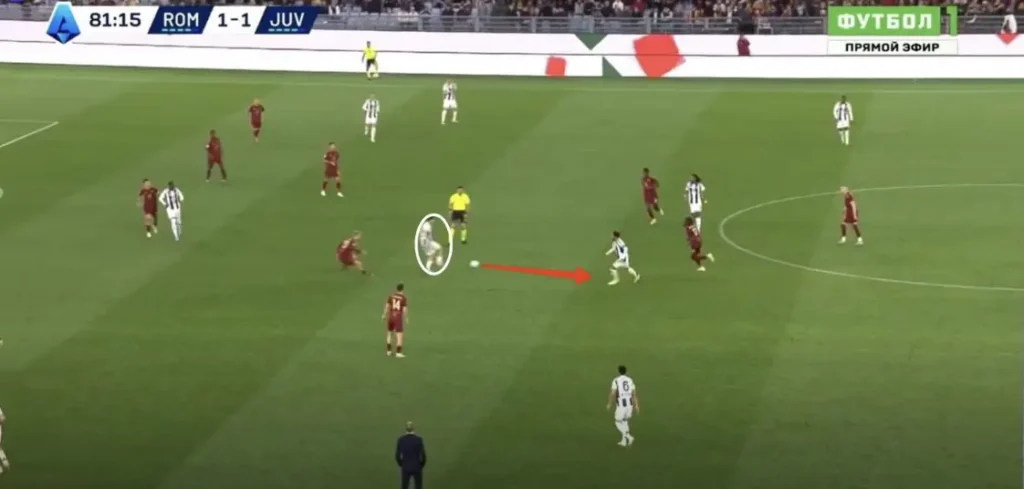
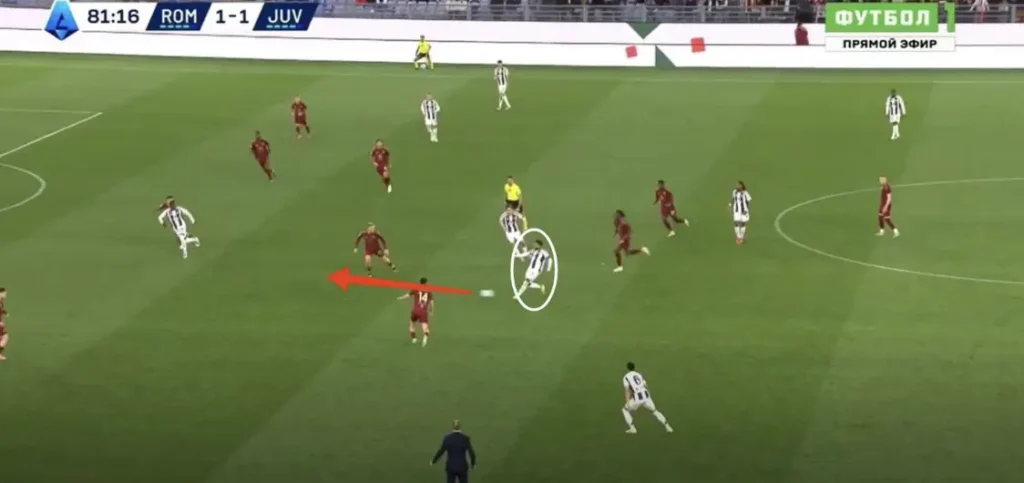
They attract defenders, make short passes, and shake off markers before creating scoring chances. In this play against Lecce, Thuram initiated the move, combined with Yildiz and received support from Vlahovic, allowing the Turkish player to beat the keeper with a placed shot after a dream sequence.
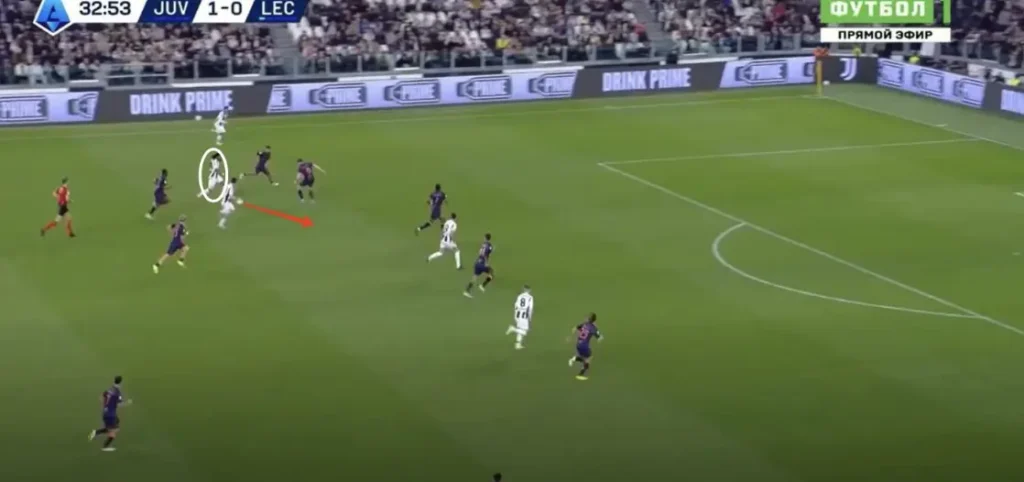
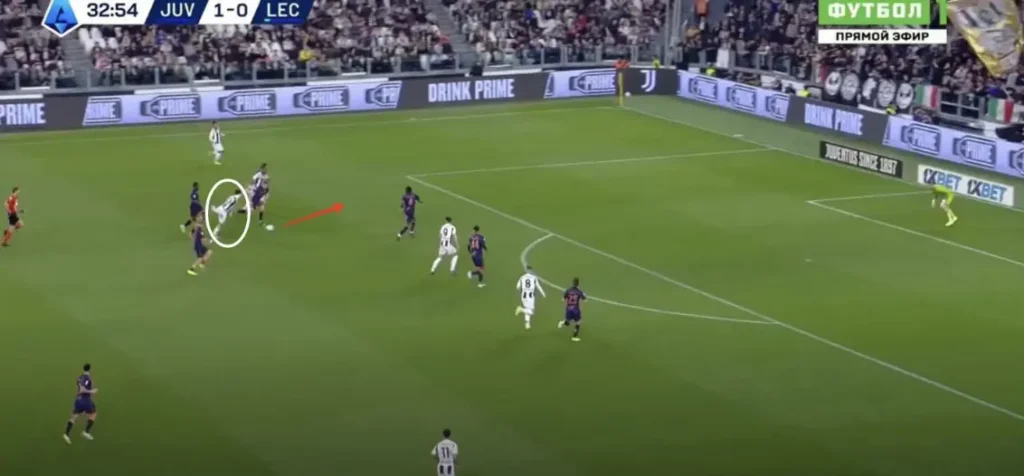
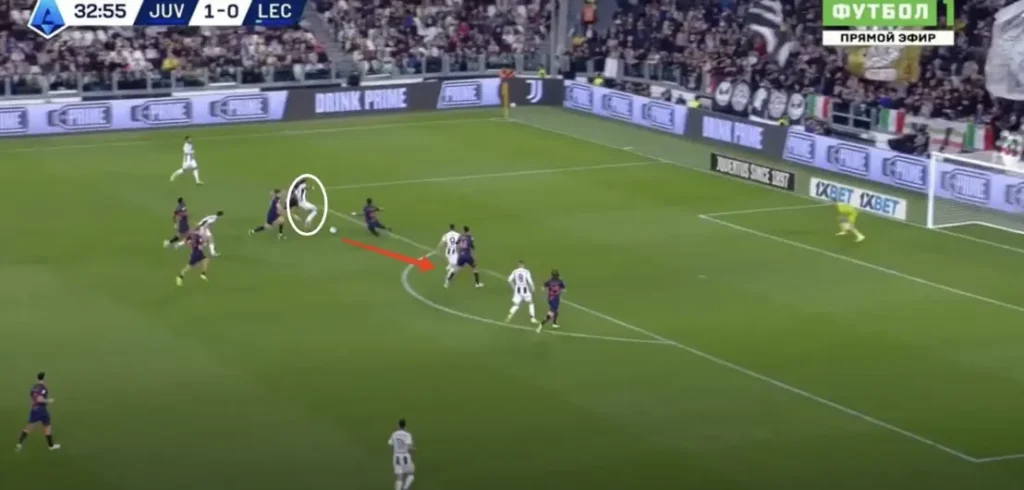
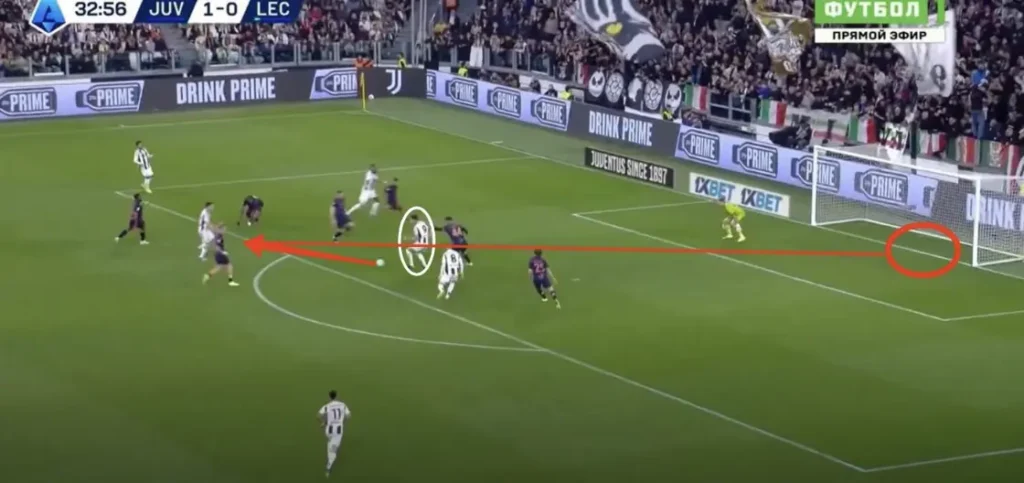
Aggressive offensive transitions
When they recover possession and see that the opponent is pushing up, they counter in numbers, aiming to exploit the opportunity for a lethal break.

Nico often leads these transitions through the center thanks to his speed and dribbling ability, driving the attack and leading the play with precision. The fullbacks spread wide, occupy the flanks, and force the rival block to break down, leaving large gaps in central areas.
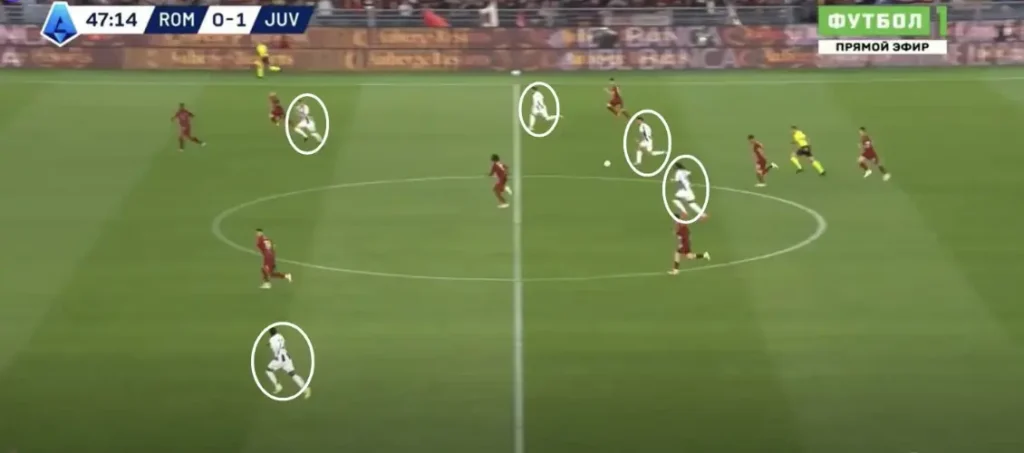
Territorial dominance through offensive accumulation
In the opponent’s half, when Juventus has the ball, they form a 3-5 shape: a deeper line of three players and a more advanced line of five positioned between defensive gaps to drive through or pass.
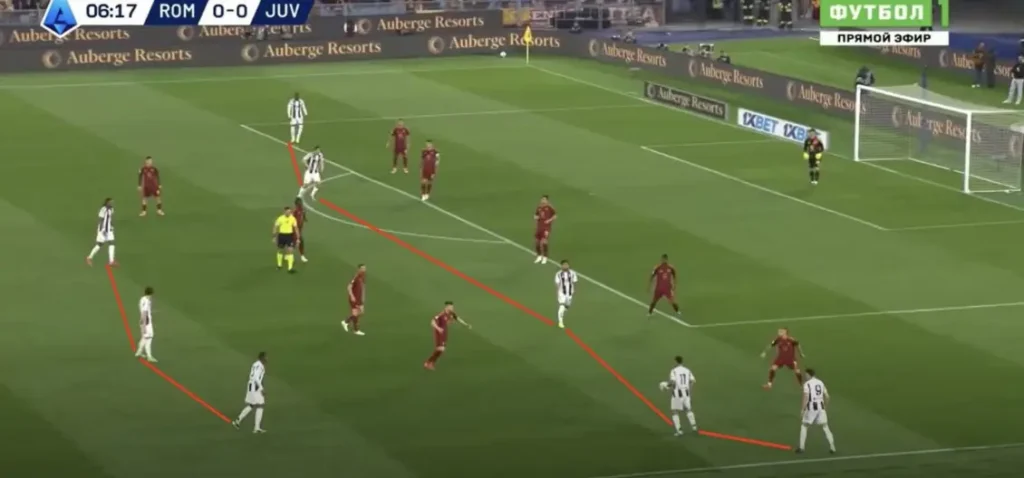
They usually match the opponents numerically to enable individual plays or combinations between players, progressing effectively into the final third and pinning back the opposition.
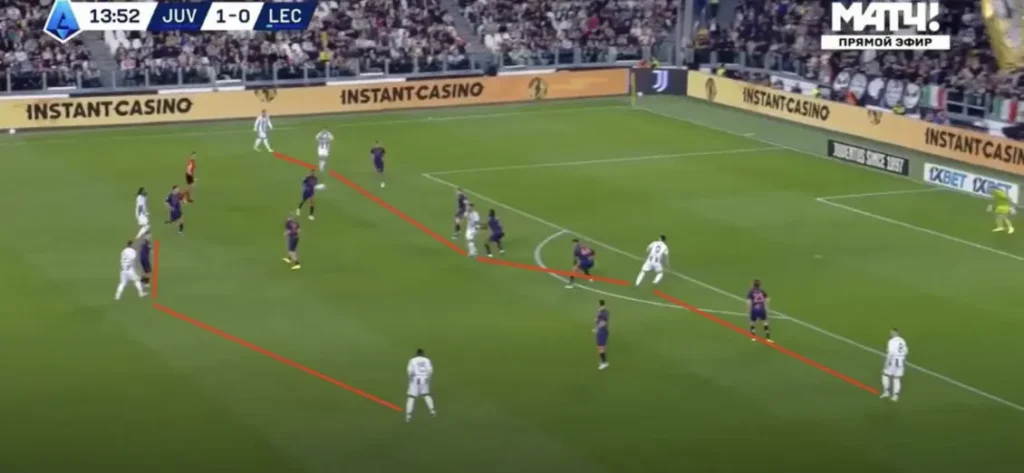
Smart and measured pressing in the opponent’s half
When they lose possession high up the pitch, they apply intense man-to-man pressure to make it hard for the opponent to play short and force long balls or mistakes in the build-up.
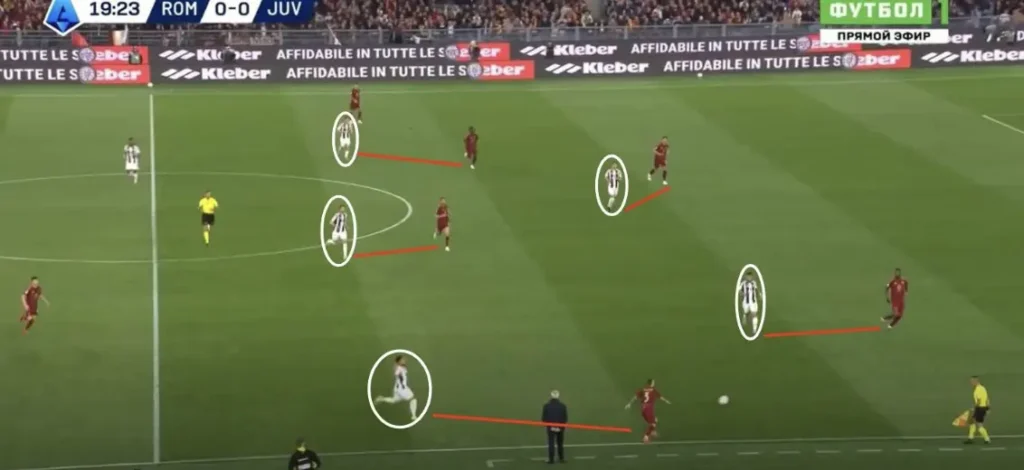
Each player stays tight on their marker, avoiding close rival combinations and forcing them to retreat or isolate from teammates, disrupting the opponent’s rhythm.
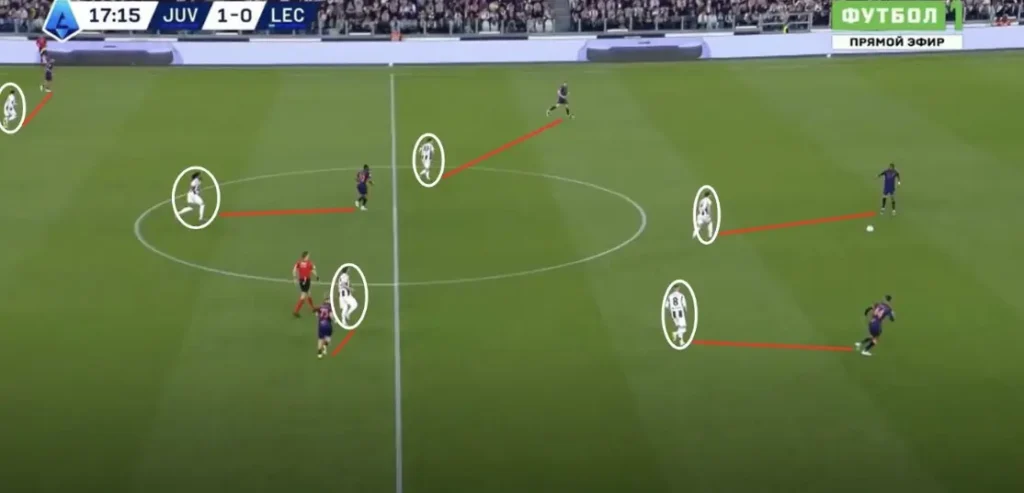
Compact retreat in a 4-3-2-1 shape
In their own half, when the opposition dominates possession, they fall back into a pyramid-shaped 4-3-2-1 to block the central channels.
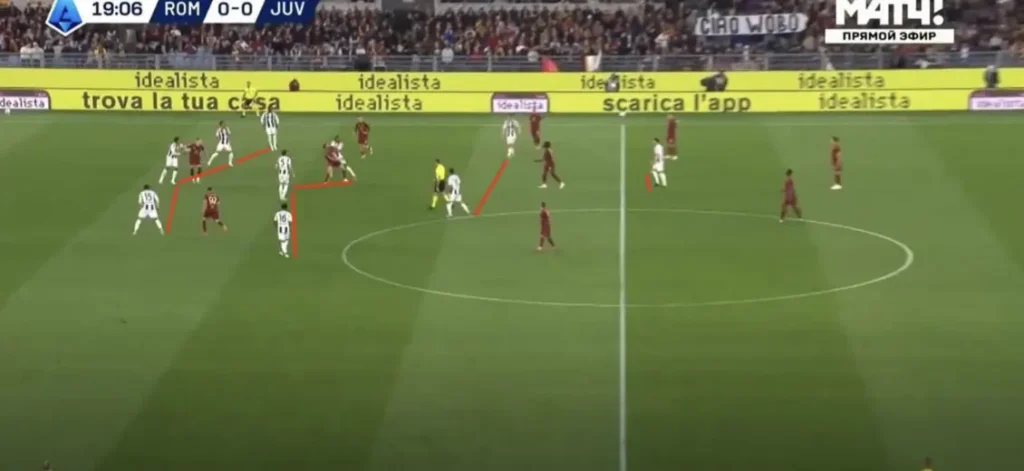
This forces the opponent to move play to the flanks. Out wide, players like McKennie and Nico support the fullbacks, creating 2v1 scenarios and preventing easy dribbles or breakthroughs.
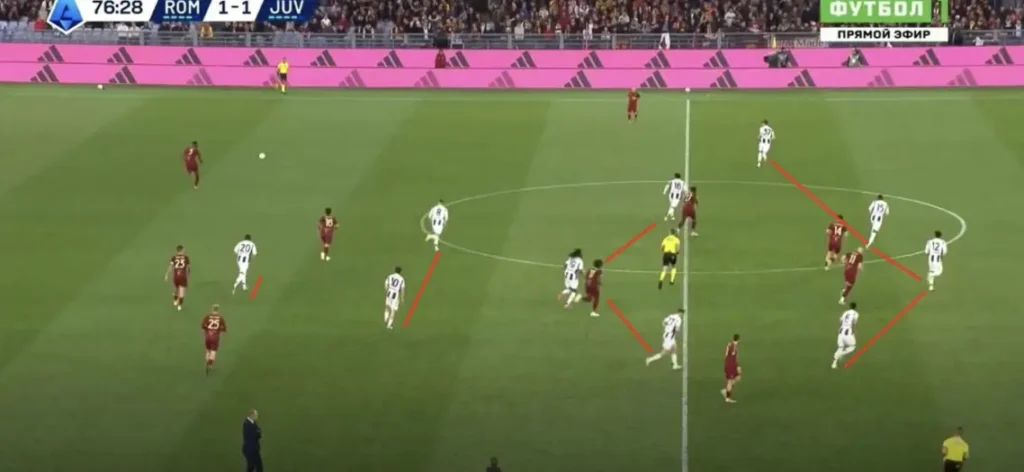
The end of a beginning
Without a doubt, a new Juventus seems to be rebuilding after a failed season under Thiago Motta. Whether led by Igor Tudor (with the tactical and mental improvements he’s brought) or not, this Vecchia Signora wants to reign once again both in Italy and Europe, leaving behind a chapter they hope to forget.
